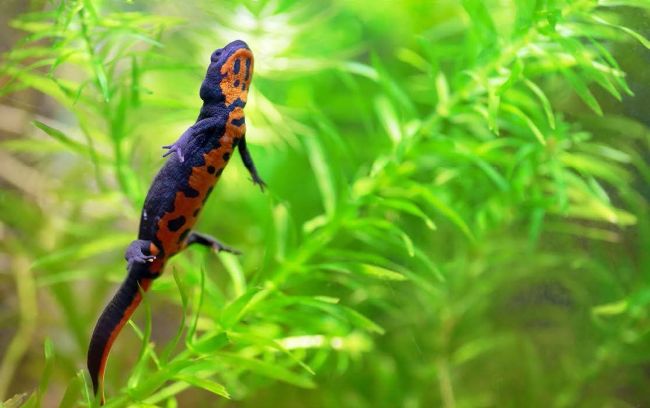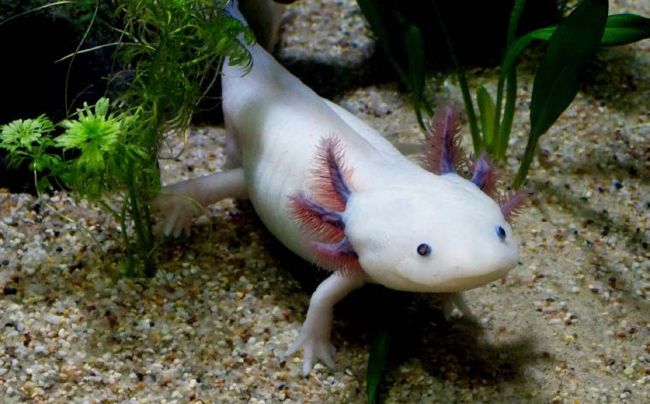Out of Africa
How amphibians breathe
There’s a key thing that links virtually all living organisms on Earth, and that is the need for oxygen. However, while in many animals, absorbing it into their bodies is a simple process, the same cannot be said for the amphibians, which have therefore evolved some rather intriguing ways of breathing. Paul Donovan reports.
AMPHIBIAN RESPIRATION

A Chinese fire-bellied newt (Cynops orientalis) swims up to the surface. These amphibians are at home both in water and on land, and are equipped to breathe in either environment.
Photo courtesy MattiaATH/
www.shutterstock.com

The axolotl remains in an “immature” state, retaining its gills throughout its life, rather than changing into an adult salamander. This is linked to a shortage of iodine which is key to this process, in the waters where it occurs.
Photo courtesy of the author.
In the beginning
With the exception of a few species which reproduce on land, all amphibian life begins in water, in the form of aquatic larvae – commonly known as tadpoles. Respiration takes place through a series of thin gas-permeable structures on the side of the head called gills. But these are not the only structures through which respiration can occur, as it may also take place through the tails of certain frog and toad tadpoles.
Thanks to its large surface area and rich supply of blood vessels, the tail has become an important area for respiration at this stage in their lifecycle. Since the tail provides the tadpole’s means of propulsion, a good flow of oxygenated water is therefore continually moving over it, thus creating an ideal environment where a high level of gaseous exchange can occur.
In their larval form, all species of amphibian breath underwater with the aid of gills. As they undergo metamorphosis (changing from a juvenile to an adult), the gills degenerate, and paired lungs develop to facilitate a terrestrial life. One example of a species where this does not normally occur, however, is the axolotl (Ambystoma mexicanum). This salamander never loses its gills, despite developing lungs, and remains throughout its life in an aquatic environment. What is even more extraordinary, is that it can even reproduce in this larval stage - a phenomenon known as neoteny.
Lungs
The first true lungs evolved in a group of fishes called lungfishes, of which there are six living species; four from Africa, one from Australia, and one from South America. While these fishes are aquatic, they need to surface, and have access to atmospheric air in order to breath. If held under water and deprived of air, they will suffocate just as you and I would.
Lungs allow oxygen to be extracted from the atmosphere, and carbon dioxide released to the environment from the body. While most amphibians have lungs as adults, there are some exceptions to this rule. When compared with other air-breathing groups of vertebrates, amphibians have a primitive lung structure. They lack the spongy appearance associated with mammals and birds, and rely on a simple sac-like structure, which works less efficiently as a result, even compared with reptiles.